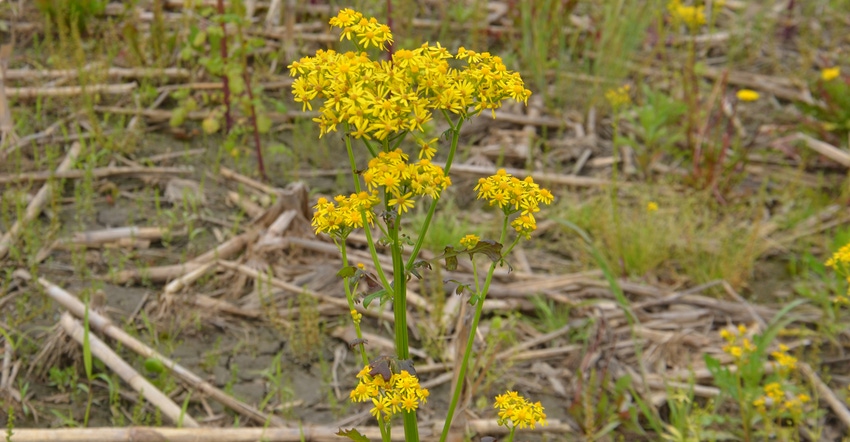
Many people can’t wait to finish 2019, wipe the slate clean and start over. It was a challenging year for farming, to say the least.
However, several agronomists say you can still learn from a year like 2019, even if yields didn’t turn out as you like. Agronomists offering lessons from what they observed in 2019 include Dave Colbert, an agronomist with Dekalb/Asgrow based in Tipton, covering north-central and northeast Indiana; Steve Gauck, a Beck’s sales agronomist based in Greensburg, covering southern Indiana; and Matt Parmer, a Dekalb/Asgrow technical agronomist based near Haubstadt, covering southwest Indiana.
Use caution analyzing plot data. Be selective about which plot results you pay attention to coming out of 2019, Parmer advises. If you examine 2019 plot data, be aware of when plots were planted and conditions that affected the plot.
“Be especially careful about using it to make decisions for 2020,” he says. “Sometimes no data is better than bad data.”
Gauck adds, “You certainly don’t want to make decisions about hybrids and varieties for 2020 based solely on what you observed in 2019.”
Understand where fungicides fit. Fungicides can protect yield in corn and soybeans if you choose the right one and apply at the proper time, Colbert says.
“Not all fungicides are the same,” he adds. “Read the label and know if the product you’re considering lists the diseases you need to control on its label.”
He notes that Delaro, a Bayer fungicide, worked where some others didn’t on specific diseases. In some cases, it turned out that the other choices didn’t claim control of those diseases on their label in the first place.
“Deciding to make the investment and apply a fungicide isn’t enough,” he says. “You need to pick the right one for your situation.”
Invest in crops if it makes sense. Some people were reluctant to put more money into late-planted crops in 2019, Gauck says.
“If a fungicide or a foliar fertilizer application made sense based on symptoms and thresholds, those who made the applications saw benefits, even in 2019,” he says.
Drought stress at key times takes a toll. When it’s dry at the wrong times during reproductive stages, you will likely lose the top end off yields, Colbert says.
“If it’s a late season due to delayed planting, those critical stages come later in the season,” he notes. “Some corn that might have made 200 bushels per acre made 180 bushels per acre because September was dry, and that’s when grain fill occurred for corn in our area. Normally August is more critical for grain fill.”
In southwest Indiana, Parmer says soybean yields suffered in many fields because it was dry in late August through September. “This year reminded us that bean size contributes about one-third of the yield,” he says. “It was dry, and many beans were small.”
Nutrient management always matters. Lots of nitrogen was lost due to wet soils in many cases this year, Parmer notes.
“Those who managed efficiently and put nitrogen on corn later in the season were rewarded this year,” he says. “Fields where nitrogen was lost and no more was added suffered all year.”
Tiling pays. While it might seem obvious, it’s a key point, Gauck says. Well-tiled fields tended to be ready to plant sooner. Stands and early growth were often better in 2019 where tile functioned properly.
Growing degree units are only a guide. Some thought unusually high temperatures in late September and early October would speed up maturity and dry down crops more than they did.
“The GDU system isn’t perfect — it’s only a guide,” Colbert says. “A 90-degree-[F] day the first of October isn’t the same as a 90-degree day the first of August, even though it goes into the GDU formula the same. It doesn’t warm up as quickly in the morning later in the season, and it cools off quicker toward evening.”
Be as patient as you can. Let soils dry out as much as possible before planting, Colbert says. He realizes it was a fact of life in 2019.
“We need to be aware that lots of soil compaction, including sidewall compaction, can happen if soils are wet,” he says.
Gauck adds that even though 2019 will end, soil compaction left unchecked will linger. It could affect crops in 2020, depending on weather conditions.
Timing is everything. When you work soils, when you plant, when you apply herbicides or fungicides — it all comes down to timing, Gauck says. The 2019 season proved that paying attention to weather and field conditions can be more important than paying attention to the calendar.
“The wrong day to plant in my area in 2019 was June 14 because it turned wet and very cool for several days,” he observes. “In hindsight, there’s a wrong day to plant every year. It’s just usually much earlier than June 14!”
About the Author(s)
You May Also Like




